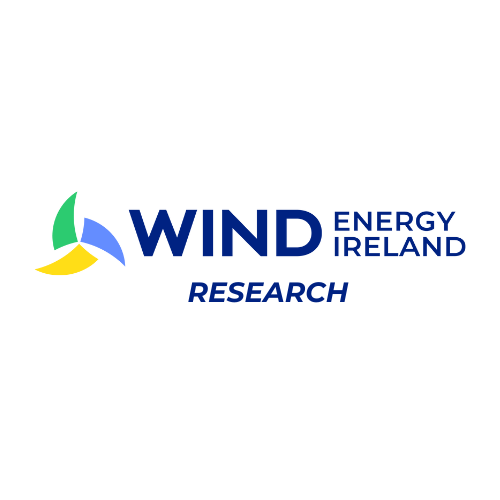Project Webinar: Understanding Hen Harrier Interactions with Wind Farms
Watch back this webinar on the RE:HARRIER project, which explores how hen harriers interact with wind energy developments in Ireland.
The RE: HARRIER Project
Introduction
The wind energy sector has grown globally as part of efforts to reduce human dependence on fossil fuels and curb climate change. In Ireland, wind farms have become a feature of the landscape in recent decades. Many Irish wind energy developments are mostly sited in upland areas, as these provide higher wind yields and fewer competing interests. However, many of the habitats and species found in these areas are of conservation interest, raising concerns about the environmental effects of wind energy developments.
Hen harrier: an Annex1 listed species, with documented population declines due to loss of suitable nesting and foraging habitat in upland areas and persecution. Wind energy development in upland areas therefore has the potential to become a further pressure on the species.
Hen Harrier’s were once widespread across the Irish landscape, their population numbers have declined, and their range has become increasingly restricted over the past two centuries, due to the loss and degradation of suitable habitats and to human persecution. The Irish hen harrier population is currently estimated at 108-157 breeding pairs, with marked declines recorded in some regions.
For wind energy to be truly sustainable, the potential ecological effects of these developments need to be fully understood and taken into consideration during the different phases of the planning process and of a wind farm’s lifetime. An accurate understanding of wind farm effects on biodiversity can inform best practice to allow for wind energy development in a manner compatible with environmental and conservation priorities and ensure that we simultaneously address the climate emergency and biodiversity crisis effectively.
Project Duration
June 2023 - June 2027
Objectives
1. Compile existing project-level assessment and management data in a centralised accessible repository (WP2) and collate additional data needed to deliver subsequent work packages.
2. Improve understanding of hen harrier nest site fidelity (WP6), foraging range (WP7), flight height estimation (WP8), efficacy of compensatory habitat (WP10) and collision mortality detection (WP9) and avoidance (WP11) as a means of optimising conservation management of the species.
3. Creation of evidence-based guidance for wind energy industry to aid assessment of hen harrier interactions with wind energy developments and assist with engagement and efficacy of planning process (WP2-9)
4. Creation of a standardised data format to regulate the collection of data by the industry during impact assessments so that future data may be added to the repository.
Work Packages & Deliverables
Work Package 1: Project management, reporting and completion
Work Package 2: Database Creation
- WP2-D1: Completed and searchable dataset
- WP2-D2: Standardised data format for industry impact assessment data collection to add to compiled dataset
Work Package 3: Hen Harrier Breeding Habitat Suitability
- WP3-D1: Peer-reviewed manuscript
- WP3-D2: Chapter of guidance document
- WP3-D3: Option to host final WP ‘heat-map’ based output of nesting likelihood across Ireland as web-based GIS application (subject to data sensitivity considerations)
Work Package 4: Hen Harrier Roosting Habitat Suitability
- WP4-D1: Peer-reviewed manuscript
- WP4-D2: Chapter of guidance document
- WP4-D3: Option to host final WP ‘heat-map’ based output of roosting likelihood across Ireland as web-based GIS application (subject to data sensitivity considerations)
Work Package 5: Hen Harrier Foraging Habitat Suitability
- WP5-D1: Peer-reviewed manuscript
- WP5-D2: Chapter of guidance document
- WP5-D3: Option to host final WP ‘heat-map’ based output of foraging likelihood across Ireland as web-based GIS application (subject to data sensitivity considerations)
Work Package 6: Hen Harrier Nest Site Fidelity
- WP6-D1: Peer-reviewed manuscript
- WP6-D2: Chapter of guidance document
Work Package 7: Hen Harrier Energetics and Foraging
- WP7-D1: Peer-reviewed manuscript
- WP7-D2: Chapter of guidance document
Work Package 8: Assessment of Accuracy of Surveyor Flight Height Estimation
- WP8-D1: Peer-reviewed manuscript
- WP8-D2: Chapter of guidance document
Work Package 9: Carcass Searching Protocol
- WP9-D1: Peer-reviewed manuscript outlining bird collision in relation to environmental variables
- WP9-D2: Chapter of guidance document detailing protocol for carcass searching and mortality monitoring
- WP9-D3: Database of collision victims for use by industry and practitioners
Work Package 10: Review of Mitigation and Management Practices for Hen Harrier
- WP10-D1: Peer-reviewed manuscript
- WP10-D2: Chapter of guidance document
Work Package 11: Hen Harrier Avoidance in Relation to Different Sized Turbines
- WP11-D1: Peer-reviewed manuscript
- WP11-D2: Chapter of guidance document
Contact Us
Email:
Connect with RE-HARRIER
Email: research@windenergyireland.com
Our Funding Body
This project has been supported with financial contribution from Sustainable Energy Authority of Ireland under the SEAI Research, Development & Demonstration Funding Programme 2022, Grant number 22/RDD/881




